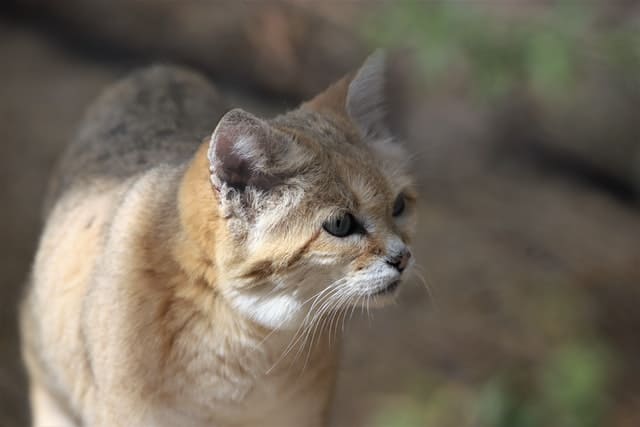
We would always like the best for our pets, above all we would never want to see them suffer or feel bad, while they are struggling with disabling diseases and problems that can undermine their mood and overall well-being.
The cat is a unique life partner, capable of demonstrations of absolute loyalty and affection. This is why it is always good to know and learn to recognize what can be the main diseases of the cat, especially those that affect his skin.
There are many reasons why the house cat can scratch, bite or scratch itself: they range from certain food deficiencies to the presence of fleas or ticks. First of all, it is necessary to specify how the cat’s skin represents a large and extremely extensive organ, which needs micro and macronutrients to stay healthy at all times. When any disturbing element appears that can interfere with the correct balance and absorption of similar substances, the health of the coat and skin of your pet would be affected.
The activity outside the home and the importance of the washing routine
Very often it happens, especially if your cat is used to venturing outside the house with a certain regularity, that the animal can collect irritating substances and agents on the skin (starting for example from herbaceous plants or small splinters). It is a good idea to check the animal’s coat when it returns home, so as to avoid itching attacks.
But the cat could also be bitten by other animals, as long as it is outside. In the event that the wound were to become infected, abscesses could be created, which in turn cause swelling and fever as well as inflamed skin (a deep cleaning of the wound will be necessary, which will be carried out by the veterinarian). It is always said that cats hate water, in reality it is a good idea to cyclically provide for their cleaning with an ad hoc wash. Only and only, however, as long as you use products designed specifically for them. The reason is obvious: the skin of cats is much more acidic compared to that of humans, therefore the shampoo we normally use could end up irritating them and triggering unpleasant reactions. In the event that you have the impression that the cat may be suffering from a skin disease or in any case a disorder related to the skin, it is always good to contact the veterinarian so as to intervene to restore the balance.
How important is proper nutrition for healthy skin
To prevent cat skin diseases from appearing it is important to pay extra attention to its nutrition. The cat’s hair is composed in absolute prevalence of proteins and, in particular, the skin renewal as well as the growth of its coat require almost a third of the daily intake of them. The skin, in the absence of this protein contribution, may appear scaly and lose luster. The hair may fall out or be extremely thin and fragile. Instead, you will have problems with oily or dry skin in the event that the right supply of essential fatty acids (Omega 3 and Omega 6) is lacking. Not being able to be synthesized by the cat, some essential fatty acids must necessarily be integrated into the daily diet.
Fleas, ticks and ringworm: things to know
But the coat of our cat can also be attacked by certain parasites, capable of triggering reactions and widespread discomfort as well as annoying irritations. All this can lead to hair loss and other problems that are however evident to the naked eye. The most frequent case is represented by the aggression of fleas, which lurk on the skin and induce the animal to scratch or lick itself abnormally. In the event that the animal is allergic to the bite of the flea, dermatitis can occur (which happens especially in the case in which the animal is particularly exposed to a similar problem).
Without forgetting the annoyance that ticks can create: they usually attach themselves to the neck or behind the ears of the animal, which is attacked while it is outside the home. In the event that it should be evident that the cat scratches a lot and that an abnormal amount of ear wax is present in his ear, then there could be ear mites (which cause otitis, usually extremely annoying). Finally, a look also at ringworm, another skin problem among the most common: the action of a microscopic fungus that sticks to the root of the cat’s hair causes them to fall and darkens them. Those we have examined are all conditions that can be treated using a mix of topical solutions (spot-on), oral, sprays or even anti-parasitic collars, which will always be indicated by the trusted veterinarian.
Mange and feline acne: what they are and how to recognize them

Among the most annoying ailments that can affect the cat’s skin there are then mange and feline acne. The first is indeed one of the most recurrent dermatological diseases that the cat of the house most contract, especially if he likes to venture out often and stay there for days. Mange is a parasitic disease that is triggered by a type of mite that can cause itching. Where are these parasites located? Generally on the head, near the ear but also on the legs and back. They feed on the poor animal’s own skin and also lay their eggs on the skin (often digging small tunnels). The most common types of mange are undoubtedly the one also known as scabies, very contagious, ear mange and notoedric mange (mainly affects stray animals, gives a lot of itching and makes scabs appear). Then there is the red mange, so called due to the fact that highly inflamed areas are created.
Finally, as regards feline acne, cats can be affected at any age: the areas most affected by the disease are the chin and lower lip. In fact, certain glands on the cat’s face remain inflamed, those that have the important task of keeping the skin hydrated by producing sebum.






